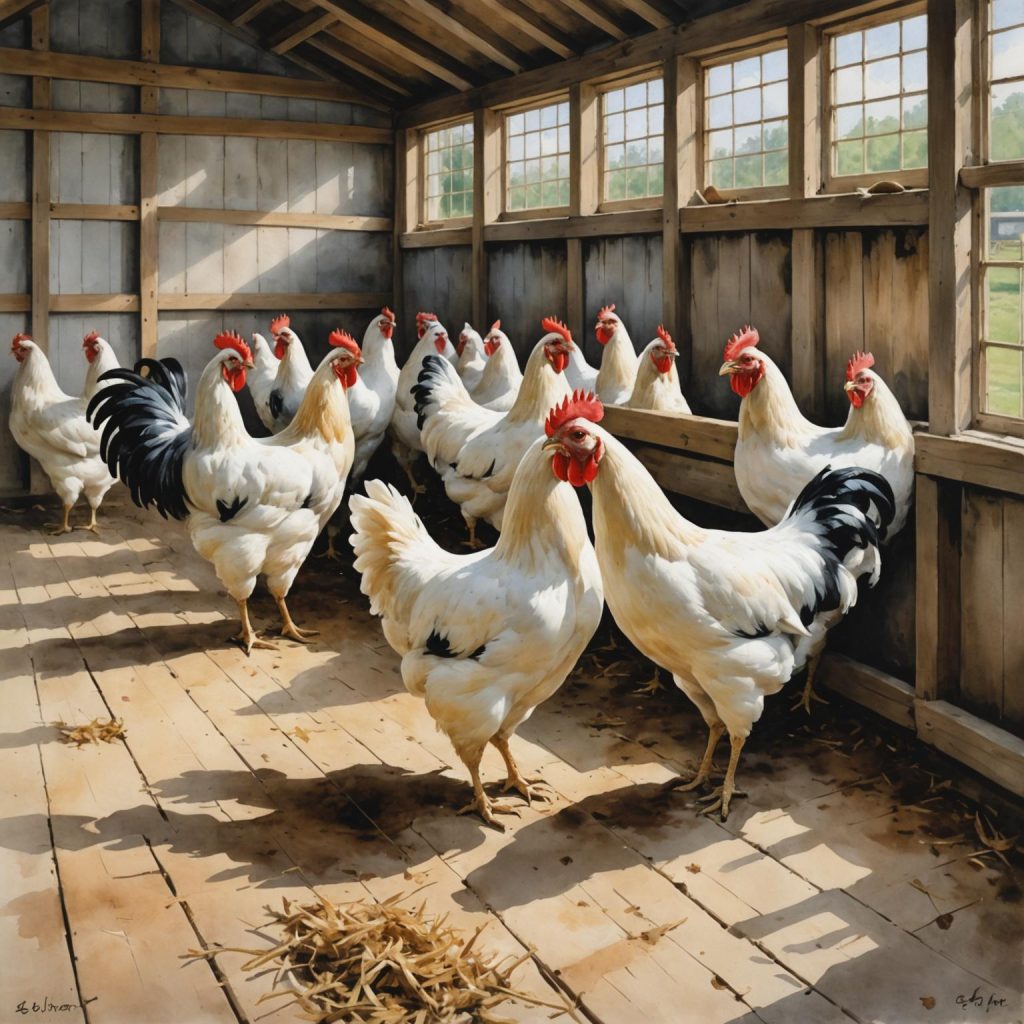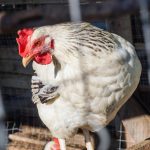Keeping chickens indoors has become a popular practice for many urban and suburban dwellers. The convenience of having fresh eggs and the ability to raise chickens in a controlled environment has led to an increase in the number of people choosing to keep their chickens indoors. However, there are several important considerations to keep in mind when deciding whether to keep chickens indoors. This article will explore the health risks for humans and chickens, environmental concerns, behavioral issues, and legal and zoning considerations associated with keeping chickens indoors. Additionally, we will discuss best practices for keeping chickens outdoors, as this may be a more suitable option for many chicken owners.
Table of Contents
Health Risks for Humans
One of the primary concerns associated with keeping chickens indoors is the potential health risks for humans. Chickens can carry bacteria such as Salmonella and Campylobacter, which can be transmitted to humans through contact with chicken feces or contaminated surfaces. In an indoor environment, the risk of exposure to these bacteria may be higher, especially if proper hygiene and sanitation practices are not followed. Additionally, the dust and dander produced by chickens can exacerbate respiratory issues in humans, particularly those with allergies or asthma. It is important for chicken owners to be aware of these risks and take appropriate measures to minimize the potential for exposure to harmful bacteria and allergens.
On the other hand, keeping chickens outdoors can reduce the risk of human exposure to bacteria and allergens. In an outdoor environment, chickens have more space to roam and engage in natural behaviors such as dust bathing and foraging, which can help to reduce the buildup of bacteria and dust in their living environment. Additionally, proper waste management and sanitation practices can help to minimize the risk of contamination and reduce the potential for human exposure to harmful bacteria. By keeping chickens outdoors, owners can create a healthier environment for both their chickens and themselves.
Health Risks for Chickens
In addition to the potential health risks for humans, keeping chickens indoors can also pose health risks for the birds themselves. In a confined indoor space, chickens may be more susceptible to respiratory issues and stress-related behaviors. Poor ventilation and high levels of ammonia from accumulated feces can lead to respiratory problems in chickens, while overcrowding and lack of stimulation can result in aggressive behaviors and feather pecking. These issues can have a significant impact on the overall health and well-being of the birds, leading to decreased egg production and increased susceptibility to disease.
Conversely, keeping chickens outdoors can provide a more natural and stimulating environment for the birds, which can help to promote their overall health and well-being. Outdoor spaces allow chickens to engage in natural behaviors such as scratching, pecking, and dust bathing, which can help to reduce stress and prevent behavioral issues. Additionally, access to natural sunlight and fresh air can help to boost the immune system of the birds and reduce the risk of respiratory issues. By providing a suitable outdoor environment for their chickens, owners can help to ensure the health and happiness of their flock.
Environmental Concerns
Another important consideration when keeping chickens indoors is the potential environmental impact of housing these birds in a confined space. Indoor environments can lead to a buildup of waste and odors, which can be difficult to manage and may result in pollution of the surrounding area. Additionally, the use of artificial lighting and heating in indoor spaces can contribute to increased energy consumption and greenhouse gas emissions. These environmental concerns highlight the importance of considering the impact of keeping chickens indoors on the surrounding ecosystem.
In contrast, keeping chickens outdoors can have a more positive environmental impact. Outdoor spaces allow for natural waste management through composting and soil enrichment, which can help to reduce the buildup of waste and odors. Additionally, outdoor environments provide natural sources of light and heat, reducing the need for artificial lighting and heating. By keeping chickens outdoors, owners can minimize their environmental footprint and contribute to a more sustainable approach to chicken keeping.
Behavioral Issues for Chickens
Keeping chickens indoors can also lead to behavioral issues for the birds. In a confined indoor space, chickens may become bored and frustrated, leading to destructive behaviors such as feather pecking and aggression. Additionally, lack of space and stimulation can result in decreased egg production and overall poor health. It is important for chicken owners to be aware of these potential behavioral issues and take steps to provide a stimulating environment for their birds.
On the other hand, keeping chickens outdoors allows for natural behaviors such as scratching, pecking, and dust bathing, which can help to prevent boredom and frustration in the birds. Outdoor spaces provide more room for chickens to roam and engage in natural behaviors, reducing the likelihood of destructive behaviors and promoting overall well-being. By providing a suitable outdoor environment for their chickens, owners can help to prevent behavioral issues and ensure the happiness of their flock.
Legal and Zoning Considerations
When considering whether to keep chickens indoors or outdoors, it is important for owners to be aware of legal and zoning considerations that may impact their ability to raise chickens on their property. Many municipalities have regulations regarding the keeping of livestock within city limits, including restrictions on the number of birds allowed, setback requirements, and noise ordinances. Additionally, homeowners’ associations may have their own rules regarding chicken keeping that must be followed.
In some cases, keeping chickens indoors may be more feasible from a legal standpoint, as it may be easier to comply with regulations regarding noise and odor control in an indoor environment. However, in many cases, keeping chickens outdoors is also possible with proper planning and adherence to local regulations. By familiarizing themselves with local laws and zoning requirements, owners can make informed decisions about whether to keep their chickens indoors or outdoors.
Best Practices for Keeping Chickens Outdoors
For those who choose to keep their chickens outdoors, there are several best practices that can help to ensure the health and happiness of their flock. Providing adequate space for the birds to roam and engage in natural behaviors is essential for preventing boredom and promoting overall well-being. Additionally, proper waste management and sanitation practices can help to minimize the buildup of waste and odors in outdoor spaces.
Furthermore, providing access to natural sunlight and fresh air is important for promoting the health of outdoor chickens. Owners should also consider predator-proofing their outdoor spaces to protect their birds from potential threats. By following these best practices, owners can create a suitable outdoor environment for their chickens that promotes their overall health and well-being.
In conclusion, there are several important considerations to keep in mind when deciding whether to keep chickens indoors or outdoors. While there are potential health risks associated with keeping chickens indoors for both humans and birds, there are also environmental concerns, behavioral issues, and legal considerations that must be taken into account. Ultimately, by following best practices for outdoor chicken keeping, owners can create a healthy and stimulating environment for their birds while minimizing potential risks.
Meet Walter, the feathered-friend fanatic of Florida! Nestled in the sunshine state, Walter struts through life with his feathered companions, clucking his way to happiness. With a coop that’s fancier than a five-star hotel, he’s the Don Juan of the chicken world. When he’s not teaching his hens to do the cha-cha, you’ll find him in a heated debate with his prized rooster, Sir Clucks-a-Lot. Walter’s poultry passion is no yolk; he’s the sunny-side-up guy you never knew you needed in your flock of friends!







